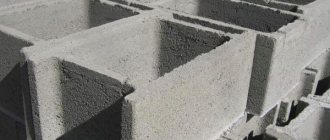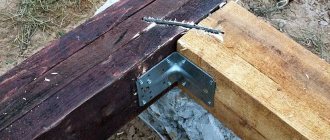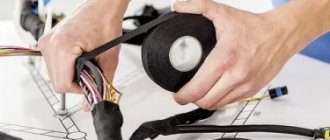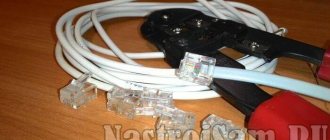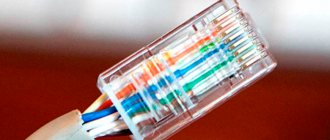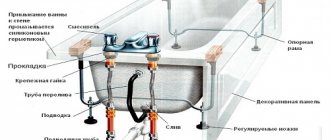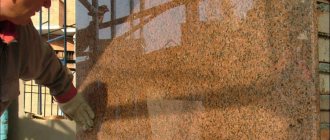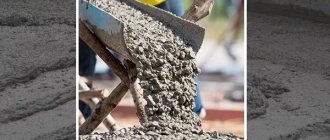Types of isolon
This material is polyethylene foam, sold in the form of rolled sheets, sleeves or rolls.
The thickness of this material varies from 1 to 50 mm. There are two types of isolon: physically cross-linked, closed-cell (PPE) and non-cross-linked, gas-filled (NPE).
PPE isolon, the characteristics of which are in many ways superior to those of other insulation materials, should be supplemented with the following characteristics:
low specific gravity (which is important for the upper tiers of light frame structures) - from 30 to 200 kg/m³; good sound insulation properties (up to 68% sound absorption); ability to reflect thermal energy – up to 97%; softness and elasticity (allow you to fill hard-to-reach areas); durability (isolon is not afraid of insects and does not rot) - service life exceeds 90 years; environmental safety (non-toxic, does not emit odor, does not irritate the skin, chemically neutral); wide temperature range of application (from -60 to +75°C); versatility of use (used in residential, industrial premises, garages, warehouses, etc.); availability of the material (you can buy isolon at any hardware store); simplicity and ease of installation.
Izolon (sample photo attached below) NPE is different:
- lower density (within 19 – 35 kg/m³);
- thickness (up to 16 mm);
- sound absorption does not exceed 13%;
- thermal conductivity – at the level of 0.040 W/μ;
- vapor permeability – about 0.001 0.001 mg/m×h×Pa;
- water absorption – 0.2%;
- temperature range of use – from -80 to +80°С.
Types of foil insulation
Foil insulation does not emit hazardous and toxic substances, unlike conventional mineral wool.
There are four types of such insulation; they differ from each other both in appearance and in their area of application and functional features.
- Foamed polyethylene coated with aluminum is used to insulate building walls and ventilation systems. Usually sold in roll form.
- Foiled polystyrene foam is used for floor insulation. It is produced in the form of thick steel-colored sheets.
- Mineral wool with a layer of foil is used mainly for insulating roofs, chimneys and baths. Sold in rolls.
- Basalt foil-coated thermal insulation material is used in all areas of construction, including the construction of gas stations. It has increased resistance to aggressive environments. Withstands temperatures from -200°C to +700°C.
How to install reflective insulation on a concrete wall
How or with what can you glue or attach reflective insulation to a concrete wall? Thank you.
Reflective insulation is a lightweight, flexible material with a thickness of 4 mm or more, consisting of a layer of foamed polyethylene or other polymer, onto which aluminum foil or metallized film is glued on one or both sides. Foil thermal insulation materials are environmentally friendly, easy to install and significantly reduce heat loss.
Manufacturers of reflective thermal insulation materials do not exclude the use of glue during installation, but draw the attention of consumers that they are most effective if an air gap of 2 to 10 mm is created between the wall and the thermal insulation. After all, air is also an additional thermal insulation layer. The method of attaching reflective thermal insulation to a concrete wall is chosen depending on the type of material, capabilities, location and purpose of the room
In any case, the concrete wall must first be cleaned of dust and treated with an antiseptic, and if necessary, dried
The method of attaching reflective thermal insulation to a concrete wall is chosen depending on the type of material, capabilities, location and purpose of the room. In any case, the concrete wall must first be cleaned of dust and treated with an antiseptic, and if necessary, dried.
When insulating balconies or cold external walls with a heat insulator with a double-sided foil coating, it is necessary to fill the concrete with a lathing of slats 5-7 mm thick and attach the material to it with a construction stapler or glue. A second sheathing is mounted on top of the heat-insulating material for laying the finishing coating with an air gap.
When installing on reflective materials with a one-sided metallized coating, it is allowed to use rubber or acrylic-based adhesives such as 88-NP, Akrol Contact, Neoprene 2136 spray, etc. You can also use polyurethane foam, sealing sealant and double-sided reinforced construction tape . The adhesive composition is applied to the back side of the material pointwise in a checkerboard pattern or randomly, so that after gluing to the concrete the required air gap of about 2 mm remains.
Reflective insulation sheets are glued end to end and the seams must be taped with aluminum tape. As a result, an airtight coating is created on the wall, reminiscent of a thermos, onto which a lath of slats can be mounted to secure the finishing material.
Finally, if increasing the thickness of the walls is undesirable or impossible, self-adhesive foil thermal insulation material can be used for insulation. To install it, you only need to prepare the concrete surface and remove the protective film from the underside of the canvas, and after gluing, seal the joints with foil tape. But when fastened to the sheathing, the efficiency of self-adhesive metallized insulation is higher.
How to install reflective insulation on a concrete wall?
Tips on the method of fastening reflective thermal insulation to a concrete wall, depending on the type of material, purpose and capabilities of the room
What kind of glue to glue foamed polyethylene with?
When choosing insulation, a special place is occupied by foamed polyethylene - a material with sound, heat and vapor barrier properties. Depending on the manufacturer, it can be penofol, isolon or polyfoam. The construction market offers different types: with one-sided or double-sided foil, as well as with a self-adhesive plane. The material on which the insulation is attached also varies. Based on all the parameters, you need to be able to choose the appropriate adhesive for polyethylene foam.
Features of penofol fastening
Penofol (isolon) is produced by special foaming of polyethylene. The insulation is covered with aluminum foil, which maximizes heat retention. It is used for internal and external work, in finishing production mechanisms, preserving heat in pipelines or air conditioning systems. It comes in rolls and individual plates. It may have additional characteristics – thickness, color. The bonding of foil to the plane of foamed polyethylene can be chemical or physical (cross-linked).
- small thickness,
- environmentally friendly,
- does not require additional skin and respiratory protection,
- there is no need for special tools,
- ease of fastening.
- the product has durable adhesive properties,
- the thermal range coincides with the temperature characteristics of the insulation,
- a non-toxic certified product is used in the interior decoration of residential premises (apartment, office),
- for external finishing you need glue that is resistant to temperature changes and weather conditions,
- saunas and baths require mixtures with water-repellent properties,
- Weicon Easy-Mix PE-PP 45. Bonds polypropylene and polyethylene. It freezes for a long time
- Titanium. Optimal for concrete base,
- Atlas Stopter K-20 glue. Adheres to mineral substrates,
- T-Avangard-K is used at high humidity,
- Contact Acrol or Neoprene-2136 spray is glued to the penoplex,
- Ceresit and Olfix are universal - they can be attached to any surface, including concrete,
- The glue is applied in an even layer, paying special attention to the edges. Before sticking, you need to wait up to 1 minute so that the composition has time to be slightly absorbed. This ensures better adhesive properties. Attach the treated penofol to the insulated surface. The plates are attached joint to joint, but not overlapping,
- setting time varies depending on the characteristics of the glue (at least 15 seconds),
- smooth the surface of the polyethylene foam, removing folds. Tape the seams, you can use foil tape,
- glued insulation in residential premises requires additional decorative finishing. The last layer of the structure (plasterboard or lining) is installed on the sheathing.
Glue is used for penofol with foil on one side.
Double-sided insulation is used for thermal insulation of loggias, garages, and pipes. They are attached to the sheathing or purchased polyethylene foam with a self-adhesive surface.
Due to the lightness of the insulation material, the load-bearing capacity of the adhesive is not so important.
Glue selection
The range of adhesives for penofol on the modern market is quite wide. Therefore, it is important to take into account the different characteristics of materials.
General rules
Penofol adhesive is selected based on the following:
Water-based glue is not suitable for gluing isolon!
A water base will not create the required level of penetration into all the pores of foil polyethylene foam. The grip on the surface will be insufficient.
Choose what to glue with, also evaluating the surface:
The seams are treated with Tilite or special tape.
Surface preparation
Level the surface, clean it from dirt and dust. Fill cracks in concrete walls and eliminate any chips or unevenness.
There are no special preparation requirements for polystyrene foam - remove dust and unevenness.
Metal, wood, and polymers are coated with a primer suitable for the type of mixture chosen.
How to attach penofol
Attach penofol with the foil side facing the inside of the room. A greater thermal insulation effect is created by an additional air layer 1-2 cm thick (using a backing - sheathing).
Glue of different compositions for polyethylene foam can be ready-made or requires preparation on site. You must carefully read the instructions for the selected mixture:
Nothing brings satisfaction more than a job done correctly and skillfully. If you follow all the recommendations, attaching the insulation will not cause much trouble.
What kind of glue to glue foamed polyethylene with?
To attach polyethylene foam (penofol) to various surfaces, it is necessary to use special glue. Weicon Easy-Mix, Ceresit and Olfix are best suited. From the article you will learn how to use it.
Source: kleygid.ru
How to attach penofol
Attach penofol with the foil side facing the inside of the room. A greater thermal insulation effect is created by an additional air layer 1-2 cm thick (using a backing - sheathing).
By watching the video you will learn more:
https://youtube.com/watch?v=zx8WiU-qxvI
Glue of different compositions for polyethylene foam can be ready-made or requires preparation on site. You must carefully read the instructions for the selected mixture:
The glue is applied in an even layer, paying special attention to the edges. Before sticking, you need to wait up to 1 minute so that the composition has time to be slightly absorbed. This ensures better adhesive properties.
Attach the treated penofol to the insulated surface. The plates are fastened joint to joint, but not overlapping; setting time varies depending on the characteristics of the glue (at least 15 seconds); smooth the surface of the polyethylene foam, removing folds. Tape the seams, you can use foil tape; glued insulation in residential premises requires additional decorative finishing. The last layer of the structure (plasterboard or lining) is installed on the sheathing.
This ensures better adhesive properties. Attach the treated penofol to the insulated surface. The plates are fastened joint to joint, but not overlapping; setting time varies depending on the characteristics of the glue (at least 15 seconds); smooth the surface of the polyethylene foam, removing folds. Tape the seams, you can use foil tape; glued insulation in residential premises requires additional decorative finishing. The last layer of the structure (plasterboard or lining) is installed on the sheathing.
Nothing brings satisfaction more than a job done correctly and skillfully. If you follow all the recommendations, attaching the insulation will not cause much trouble.
You can only stick it with double-sided tape
it has been proven that it holds tightly if you glue it along the joints and put one strip of tape in the middle of the strip. If this doesn’t appeal, you can try titanium glue for foam false ceilings (it’s sold everywhere and is inexpensive). again, it has been proven that it does not dissolve penofol and holds well. It’s just more hassle - you have to press the penophone until it sets
It is no longer possible to know who first came up with the idea of using expanded polystyrene instead of a building material for thermal insulation of buildings - initially its area of use was limited to the transportation of furniture and equipment, where it acted as a sealant. In this article we will try to figure out how to properly glue polystyrene foam to metal and concrete.
How to glue: process features
Fastening this material is quite simple. This work does not require special knowledge or skills. Therefore, quite often it is done with your own hands. At the same time, the quality of the work received is in no way inferior to that performed by specialists.
After the base has been prepared, it is necessary to remove the backing from the packaging material. Measure and cut a piece of it. Now proceed to preparing the glue. Usually the method of diluting it is indicated on the packaging. It is necessary to study this information and you can proceed to its breeding.
After this, you can begin to carry out the main work. Experts recommend starting from the window and then moving along the wall. At the same time, do everything carefully and carefully. To do this, first apply glue to the wall, then the substrate. After which they connect. This must be done end to end. If excess glue comes out, remove the excess with a cloth.
Once all the backing is glued, it must be left to dry. This period must be at least 24 hours. When this time has elapsed and the backing is firmly and securely fixed, proceed to gluing the wallpaper.
Today, the use of foamed polyethylene as a substrate is quite widespread. This is explained by its high efficiency. In addition to the fact that this material provides warmth and comfort in the house, it also helps combat high humidity. Provides good sound insulation in the room. At the same time, the wallpaper looks aesthetically pleasing on it. And if there were any unevenness on the wall, the backing hides them perfectly. Wallpaper with a backing has a long service life. At the same time, throughout this period they perfectly retain their properties and original appearance. You can see this in the photo below.
Recommendations for gluing other materials to concrete
Penofol
You can solve the problem of how to glue penofol to concrete in the following ways:
- using a special glue such as Weicon_EasyMix - a two-component composition based on methyl acrylate;
- use of self-adhesive penofol.
The first method is more expensive because it requires the purchase of Weicon glue. However, it should be recognized that this composition is universal.
Weicon glue
This means that its remains after installation will be useful for solving other problems. In particular, if you are looking for how to glue isolon to concrete, then you can not purchase other adhesive materials, but use the Weicon composition.
Drywall
Gypsum putty should be used to attach this material to the concrete surface. It is applied to the plasterboard along its perimeter using a notched trowel. In addition, two or three lines are drawn along the center of the workpiece.
Gypsum putty
This method is only suitable for those walls that have deviations of no more than two centimeters. If this value is exceeded, then a different method of fastening will be required. It consists of using special dry mixtures, for example, Knauf Perlfix.
The prepared composition is applied in small piles, placed along the perimeter of the sheet every 20-25 centimeters. In the central part of the product, lumps of the mixture are placed at a distance of 30...40 cm from each other.
Ruberoid
Gluing roofing felt
One of the difficult questions encountered during the construction process is how to glue roofing felt to concrete. For this, bitumen mastic is usually used. It is applied to the concrete surface with a construction roller or brush.
Subsequently, it, together with the roofing material, is heated with a burner, after which the sheet is glued to the concrete
Please note that before gluing the roofing felt to the concrete, you should allow the mastic to dry thoroughly. This will help ensure a durable coating.
Plastic
The problem of how to glue plastic to concrete can be easily solved with the help of TITAN construction adhesive. This is a ready-to-use one-component composition with good adhesion, as well as water and frost resistance.
Another good option for gluing PVC to concrete is to use the Moment_Germent multi-purpose adhesive-sealant. It allows high-quality gluing of products made of polyvinyl chloride, polystyrene and other plastics.
Rubber
Glue 88CA
When deciding how to glue rubber to concrete, you can opt for 1 of 2 points - this is the use of a special adhesive mixture or mastic. An example is 88-CA glue. It is designed for cold gluing rubber to concrete, wood, metal or other substrates.
How to glue penophenol to concrete?
Modern insulation materials such as penofol require high-quality fastening. Penofol is polyethylene in a foamed state, covered with foil on top. Regardless of the type of finishing material: roll or sheet, a special adhesive composition is used as fastening. It allows you to maintain the technical properties of the material at a high level.
Using special glue
When choosing an adhesive composition for penofol, you should take into account the type of surface to which it will be attached. The foil coating does not allow drafts or heat to pass through. To save heat energy in the building, penofol is attached to the insulation from the inside. The air space should be 1 cm. Penofol must be fixed with an air gap.
Foam plastic 5-10 cm wide is used as insulation. The sheets must be glued tightly to a special adhesive composition suitable for the foam. Plastic umbrellas provide additional support. A mesh is attached to the top.
Advantages
Using glue for fastening penofol has the following advantages:
- fast;
- economically;
- no need to have special skills;
- no special tools required;
- penofol holds well due to its lightness;
- not susceptible to moisture;
- Natural based glue is highly effective.
Requirements for glue
The substance for gluing insulation to concrete must have the following features:
- have a high level of water resistance and connection to the base;
- do not have a destructive effect on the base material;
- do not react to the environment and weather;
- be resistant to temperature changes;
- have antibacterial qualities;
- maintain its qualities for a long time.
So that the material can be glued well, one of the components of the adhesive is solvents. When choosing a means for attaching insulation, you need to rely on the type of surface.
A specific adhesive composition is suitable for each material. So, if you need to glue a sauna with penofol, choose a heat-resistant adhesive for the sauna.
Each adhesive composition used for interior work must have a certificate confirming its safety.
Surface preparation before gluing
Before gluing, the concrete should be coated with a primer.
It is necessary to prepare the surface correctly for gluing so that the connection is uniform and monolithic.
Initially, irregularities and defects are eliminated, cracks are covered, chips are leveled. To improve the adhesion of concrete and foil insulation, the base is primed.
The concrete must be smooth, cleaned, and protruding metal parts must be treated with an anti-corrosion agent.
How to glue correctly?
If the insulation is self-adhesive, it is easy to glue. Using penofol. the usual adhesive composition is applied to the side without foil in an even layer, thinly, evenly over the entire surface. The edges need to be impregnated with glue more thoroughly so that during operation the insulation does not begin to lag.
The insulation is kept for 10 - 50 seconds so that the adhesive composition has time to set. This way it connects better to the surface. Then the penofol is pressed against the concrete, smoothed, evenly distributed until completely fixed. The seams need to be additionally glued.
Weicon Easy-Mix PE-PP 45
It is a two-component structural adhesive. Used for high-quality joining of polyethylene and polypropylene. The glue base is methyl acrylate.
Other
- Titanium is lightweight, easy to use, has good ability to bond to a concrete surface, one-component. Suitable for base - reinforced concrete.
- Tilit - used to connect the seams of insulation.
- Atlas Stopter K-20 kley - suitable for mineral bases.
- Ceresite (CT83) is suitable for any surface.
- T-Avangard-K - gives the surface additional waterproofing.
- Allfix is a universal adhesive suitable for any substrate.
Conclusion
Concrete is a material that can absorb moisture and has high thermal conductivity and heat capacity. It is precisely because of its instability that you need to choose the following adhesive composition:
- having high adhesion;
- hygroscopicity;
- resistance to temperature changes and weather;
- retaining its qualities for a long time;
- does not destroy the base.
How to glue isolon to plywood?
#1 RWS87
Actually, there is a foamed polyethylene sheet, without an adhesive base, 30mm. How to attach it well to plywood? Maybe someone knows? Thank you in advance )
- Top
- Insert nickname
#2 BAN
Attached images
Post has been edited by BAN: 28 June 2021 05:18
- 1
- Top
- Insert nickname
#3 sabanur
- 1
- Top
- Insert nickname
#4 copich
- Participant
- Messages: 4,838
- Moscow city
Look towards Kleiberit adhesives, for example PUR501. He glues a lot. But I don’t know how I feel about plastic products.
He’s just not afraid of cold or moisture. Or, alternatively, double-sided tape. They are also different and some have a death grip.
- 1
Start respecting yourself and then they will respect you too.
work on equipment that will bring you joy and then work will be a pleasure!
- Top
- Insert nickname
#5 Victor 69
Actually, there is a foamed polyethylene sheet, without an adhesive base, 30mm. How to attach it well to plywood? Maybe someone knows? Thank you in advance )
regular polyurethane foam, I glue plasterboard onto smooth walls, sometimes twin blocks until no one sees them, they hold up well.
- 2
- Top
- Insert nickname
#6 svarnoi69
18kg-3400-3700r small packaging available
- for gluing porous materials to each other, to upholstery material, wood, concrete, etc. - sets quickly - high resistance to aging, heat and water resistance - high elasticity and strength For gluing:
- foamed polyethylene foam (Stenofon, Izolon, Energoflex, Vilaterm)
- polyurethane foam ceiling tiles and fillets
- foam rubber
- foam plastic, penoplex and other porous materials
Foil insulation for walls and floors
Foil insulation has relatively recently appeared on the construction market, but is rapidly gaining popularity for various reasons. Next, we will consider the types of this material, the advantages in comparison with traditional insulation and how to use it correctly.
What is rolled foil insulation
This is a combined material for insulating walls, floors and ceilings, consisting of several layers:
- Insulation made from familiar materials.
- A layer of foil.
The material is rolled, therefore it has a relatively small sheet thickness. How does heat retention occur?
- A thin working layer delays the penetration of cold air from outside,
- The foil reflects heated air into the room.
Varieties
Roll insulation materials are classified according to the main material:
- Foamed polyethylene with foil that can be attached on one or both sides.
- Folgoizol is created on the basis of bitumen/rubber, mineral fillers and antiseptic.
- Mineral wool rolls with one-sided foil surface.
- Basalt lamella insulation,
- Expanded polystyrene boards with one aluminum surface.
Each of the presented materials is intended for use in certain conditions.
Application
Penefol (closed cell polyethylene foam) is versatile in use. They insulate walls and floors in residential premises.
Foil insulation for pipes and roofing - foil insulation. It is also used in the construction of industrial facilities.
Rolls of mineral wool with an aluminum layer are used in the same way as conventional insulating mats: for insulating walls, floors and other structures. The difference between foil-coated mineral wool and regular wool is the built-in waterproofing; aluminum does not allow moisture to pass into the fibers, preventing the material from getting wet.
The ideal insulation foil for a bathhouse is based on basalt: it has a low heat transfer coefficient, is not afraid of humidity and large temperature changes. As you know, stone wool is a hard material. To roll it into a roll, the basalt is sawed into lamellas, which are laid on an aluminum base. This insulation is used to insulate various social and industrial facilities.
Foiled polystyrene foam is used for floor insulation.
All materials with a layer of aluminum foil have higher technical performance than their traditional form. The cost of foil insulation is an order of magnitude higher than the cost of conventional material; this is the main disadvantage of the “advanced” sample.
The first and most important question is which side to put the foil insulation on?
The first rule of installation: the reflective side should be directed towards the room. This will ensure natural heat reflection.
We insulate the walls
The structure of insulation and finishing must be thought out: in the case of walls, there must be an air gap between the insulation and subsequent finishing. When using a mineral wool base, it is necessary to insulate the material from the penetration of water; for this, a membrane is attached to the base, allowing steam to pass out.
How to attach foil insulation to a wall: roll out the insulator over the fixed membrane and fix it with guide rails, the thickness of which should exceed the thickness of the main insulation. The layers are connected with staples along the edges of the slats. Subsequent finishing of panels or lining is carried out along guides, which provide an air gap with their thickness.
Some craftsmen recommend protecting the foil with vapor-proof films to prevent moisture from entering the body of the mineral wool layer through possible holes in the metal.
We insulate the floor
For wooden and concrete floors, the algorithm of actions remains identical:
- The base is cleaned of old coatings, and debris is carefully swept away.
- Prime the subfloor with a concrete or wood primer.
- After the primer has dried, measure out the required amount of roll insulation and roll it out. It is optimal to use adhesive-based material. The strips are laid with an overlap of 10 cm, the joints are taped with aluminum tape.
- The finishing coating is laid on top.
If the room has an electric or water “warm” floor, the rolls are rolled out with the reflective side up, a reinforcing mesh is laid on top, then heating elements and a cement screed is produced followed by cladding.
Foil insulation for walls and floors
Let's look at the types of foil insulation, its advantages over traditional insulation, and how to use it correctly.
Secret. How to glue foil insulation to a wall.
Kind. Somehow I encountered a problem with gluing foil insulation to the wall. There is a lot of information on this matter on the Internet. But I didn’t try what kind of glue I used, and in the end it didn’t work out. Everything was falling off. And the secret is simple. The insulation is covered with a thin polyethylene film, to which the glue does not stick (to a smooth surface, there is nothing for it to catch on). The manufacturer did not take this into account, or did not want to. It is enough to make the glue application areas rough, that is, sand them with sandpaper. You can use any glue, as well as polyurethane foam. And you won’t need a stapler, nails, dowels, or military-strategic toxic liquids - as mentioned in many construction forums. Good luck everyone, keep at it.
Minor observation. But many do not see the little things. Hence the big problems.
It is enough to make the glue application areas rough, that is, sand them with sandpaper.
And most importantly, why waste money on this and other materials and glue something that will not bring any effect.
jekasus wrote: And most importantly, why waste money on this and other materials and glue something that will not bring any effect.
I’ll support it. Apparently TS just has free material and needs to kill time.
jekasus wrote: And most importantly, why waste money on this and other materials and glue something that will not bring any effect.
Yes, I agree with you. But this effect does not consist in preserving heat; there is enough of it; water heating comes from the house. If you look more closely at the last photo - this is an extension to the future greenhouse on the north side, of course there will not be enough light for the plants. Reflective paint is not available. So the foil serves to reflect it. Even with artificial lighting, when entering a room at night it is impossible to look; the eyes are hurt by the bright, dazzling, iridescent light. (Checked, a few electric lamps are enough) This is a plus for energy saving. In general, the issue was not considered regarding the construction of greenhouses and where and why to glue foil insulation. The meaning is how to glue it!
How to attach isolon to the wall
Kind. Somehow I ran into a problem **gluing** foil insulation to the wall. There is a lot of information on this subject on the **Internet**. But how and with what kind of glue I haven’t tried - in... - photo - Mastergrad Forum
Types of glue and their manufacturers
The vast majority of adhesive compositions practically do not stick to polyethylene, simply being squeezed out from the area where the surfaces come into contact. But there are still materials that can cope with such a difficult task.
The most popular types of glue that can be used for polyethylene are:
- BF-2, BF-4;
- two-component acrylate;
- epoxy.
Butyraphenol glue (abbreviated as BF) is produced in Russia, in the city of St. Petersburg. The glue is a viscous, thick liquid of brown or reddish-brown color and does not rot or corrode.
BF-2 is suitable for gluing metal, plastic, ceramics and wood, and is used for restoration work. Glue cannot be used for dishes, as it contains toxic aldehydes and phenol. BF-2 is universal, chemically inert and moisture resistant.
BF-4 is practically no different from BF-2 in terms of chemical resistance, but its scope of application is slightly different. BF-4 is usually used for gluing elastic materials that are subject to vibration and bending. For example, leather, wood, plexiglass, textolite, metals and alloys.
Two-component acrylate adhesive V-Strong GELIAHAO 302 is characterized by increased strength, it is transparent and does not harden very quickly (in 4 minutes), which allows you not to rush too much when working. Excellent bonding of metal and plexiglass.
Transparent epoxy adhesive “Contact” is produced by ROSEL LLC, St. Petersburg, based on polyepoxy resin and hardener. Used for repairing products made of fiberglass, porcelain, wood, earthenware, glass, metal and various alloys. The composition perfectly fills cracks, voids and gaps, restores the shape and volume of objects. The seam is characterized by resistance to gasoline, oil, and water.
Foil insulation - purpose and properties
The main property of folgoizol is reflected in the name - heat preservation.
Unlike most analogues, insulation with aluminum foil consists of two components: in addition to the metal strip, it contains a mineral base. It is represented by three main types of polymers:
- Polyethylene foam is the cheapest option for foil insulation and the thinnest of its types. Its thickness is 2–10 mm. Most often, foiled polyethylene foam is used as a substrate for laminate flooring.
- Fiberglass is the most commonly used in construction. In addition to the ability of metal to reflect heat inside, this type of thermal insulation perfectly prevents the penetration of cold from the outside. This is achieved due to the low density of the fiberglass sheet, which has an air gap between the thin threads. This foil insulation is used to insulate floors, walls and ceilings of buildings.
- Stone wool is intended for use in extreme temperature conditions: thermal packaging of pipes, saunas, steam rooms in baths.
The vast majority of all these materials are covered with aluminum foil on one side. The only exception is polyethylene foam: some seals are metallized on both sides.
Mounting features
Izolon (penofol) is covered with aluminum foil, which allows for the best possible retention of heat.
Its adhesion to the surface of the insulation can be chemical or physical, that is, cross-linked. Izolon may have additional characteristics such as thickness or color. If you are looking for win-win insulation for your home, then this option will be the best choice. It is also perfect for insulating elements of air conditioning systems, pipelines, and production mechanisms. Foamed polyethylene is used for both external and internal work. The material has quite significant advantages. Among them are:
- small thickness;
- ease of installation;
- environmental cleanliness.
Installation of insulation is possible without the use of special tools. Working with foamed polyethylene does not require additional protection of the respiratory tract and skin. The material is so light that the load-bearing capacity of the glue will not be critical.
Scope of application of foamed thermal insulation
Due to its unique properties, isolon is widely used in many industries, construction and repair work. For example:
- Insulation of wall structures, floors, ceilings, floor slabs. Izolon has proven itself well in private and multi-storey construction, construction of garages, bathhouses, and outbuildings. Insulation of balconies and loggias without creating additional load on supporting structures.
- Vapor barrier for rooms with high humidity.
- Insulation of pipelines.
- Reliable insulation when installing self-leveling floors.
- Industry: packaging of medical equipment, production of thermal blankets, production of refrigeration chambers. It should be noted that life jackets are made on the basis of isolon, which help retain body heat during prolonged exposure to cold water.
- Protection of car elements from corrosion, additional body insulation.
It should be noted that no building material in the world has such versatility.
https://youtube.com/watch?v=JLr-UiwEvNc
Alternative types of materials
There is no alternative to isolon as such, but we would be wrong if we do not briefly talk about materials that in certain cases can replace it.
Cotton materials, which include mineral wool, glass and ecowool, have almost the same heat and sound insulation properties as isolon. Their manufacturers insist that their main advantages are:
- Lightweight and easy to install.
- Low thermal conductivity.
- Strength under compression, mechanical stress, ruptures.
- High sound insulation characteristics.
- Not susceptible to fire.
- Resistance to temperature deformation.
- Biological and chemical resistance.
Mineral wool is available in the form of rolls and sheets and has different softness and thickness. It is extremely easy to install structures using various types of wool:
- The walls must be covered with a steam or hydrobarrier using a stapler.
- The next step is to assemble the frame from special metal profiles, the assembly step is 50 centimeters.
- Then cotton wool is laid, carefully distributed throughout the entire space, avoiding gaps.
- Then the cotton wool is fixed in any convenient way, the structure is covered with sheets of plasterboard, plastic panels, clapboard, fiberboard.
- The final stage is finishing the walls; its type depends on what material you have chosen or what is available.
The disadvantage of the material is its allergenicity; you should work in protective gloves and a mask to prevent contact of the material with the mucous membranes and skin of the hands. It also requires additional vapor barrier, since it loses its properties from moisture. In principle, the technology is simple and you can easily do everything yourself without overpaying to contractors.
Foam plastic or its analogues
The undoubted advantages of polystyrene foam include the following:
- Polystyrene foam is not afraid of moisture.
- It is a good heat insulator.
- Not susceptible to rotting, fungal or mold stains.
- Easy to install and cut.
- Has low weight.
- Heat resistant to low temperatures.
- Does not require waterproofing.
Polystyrene foam also has many disadvantages:
- It is fragile, crumbles, and requires additional protection with a dense base.
- Not breathing.
- Easily destroyed and enters into chemical reactions.
- We love rodents.
Polystyrene foam is used mainly in non-residential premises or for outdoor use. Installation is carried out using an adhesive mixture and requires additional fastening with “fungi”, careful coating of seams, plaster and subsequent painting.
Cork
The advantages of cork coverings undoubtedly include:
- Excellent insulation of extraneous noise and heat conservation.
- Waterproof properties.
- Resistance to deformation and pressure.
- Fire safety.
- Resistance to the formation of fungus and mold.
- Hypoallergenic.
- Low degree of contamination.
- A wide range of products available in slabs, rolls and mixtures.
There are no materials without disadvantages, cork has:
- High cost of material.
- Low durability of the protective coating.
- The appearance of traces from heavy equipment or furniture.
The cork is mounted on glue - acrylic or contact, either with one-sided or double-sided application. The work is painstaking and requires endurance and attention, but it is quite possible to do it yourself. Installation requires a special temperature regime and wall humidity level - temperature not lower than 18 degrees, humidity not more than 3%. When gluing, avoid the appearance of air bubbles between the wall and the material. Before starting work, the material must stand in the room for at least 24 hours.
As we see, there is no material that is also universal and technically suitable. It follows from this that the modern material – izolon – will find application in any home and for any needs. Insulating walls from the inside with isolon is the most rational solution. Use new products with pleasure and provide yourself with increased comfort without spending fabulous sums on it!
Foil insulation has relatively recently appeared on the construction market, but is rapidly gaining popularity for various reasons. Next, we will consider the types of this material, the advantages in comparison with traditional insulation and how to use it correctly.
Advantages and disadvantages of foil insulation
The advantages and popularity of foil insulation are explained by its ability to reflect IR radiation back into the room, thereby significantly reducing heat loss and saving energy consumption, for example, wood for a fireplace or stove. Fiberglass products, due to the air content between the fibers, are similar in temperature regulation to animal fur. This also helps to reduce external noise levels and get rid of drafts.
The anti-corrosion properties of aluminum foil are useful in rooms with high humidity (baths, saunas) or when condensation occurs. Insulating the chimney, in particular with stone wool insulation, will help avoid unnecessary heat loss into the air.
Important positive qualities include low cost with a long service life - up to 50 years. The ability to install the insulator yourself without involving specialists is also appreciated.
The disadvantages of this material stem from its advantages: insulation with foil retains not only heat, but also moisture and odors. These side effects are most noticeable when you want to wrap the entire house in foil: floor, walls, ceiling. In this case, regular ventilation of the premises is recommended.
With maximum use of foil insulation, especially in rural areas, the cellular signal strength is likely to decrease, which can lead to frequent disconnections while talking or using the Internet. Placing the PC or the subscriber itself closer to the window will solve this problem.
How to glue correctly: advice from professionals
Preparatory work
A high-quality start of work and processing of the base is a guarantee of an excellent result.
High-quality penofol adhesive is not a guarantee of a positive outcome. In order for the material to firmly adhere to the base and to restore a reliable monolithic screed between the elements, it is necessary to properly prepare the intended plane for the front of the work. To do this you need:
- Eliminate existing defects on the concrete surface, such as chips, cracks, depressions and unevenness.
- To improve adhesion, treat the surface with a primer.
- Dust the site, remove dirt, remove elements that have peeled off from the base.
- Treat the existing metal parts with a special agent that prevents the corrosion process.
- Apply an antiseptic solution to the concrete surface.
Gluing stage
Modern industry has simplified the fastening process by developing self-adhesive penofol. Ordinary polyethylene foam is glued using a special adhesive. The selected glue is applied in an even layer to the side where there is no foil. The edge parts of the penofol are lubricated with the substance more abundantly to avoid material lag at the joints. To ensure that the glue sets properly, wait 1 minute, then glue the polyethylene to the plane. To ensure high-quality installation of the material, the penofol is leveled and pressed until it is fixed. The resulting seams are additionally treated with glue. The plastered structure can be used 12 hours after installation of the heat-insulating material.
How to glue: preparatory work
After the material for wall insulation has been selected and the quantity required has been calculated, the question arises of how to glue foam wallpaper. This work is not difficult. It consists of several interconnected stages.
The first thing you need to start with is to prepare the surface, which will ensure uniform and monolithic gluing. To do this, the surface is leveled, its flaws are eliminated, cracks must be covered, chips must be removed. After which the base is primed. This will ensure better adhesion. If there are metal elements in concrete, they are treated with special means that prevent their corrosion. Next comes cleaning the surface from dirt and dust.
